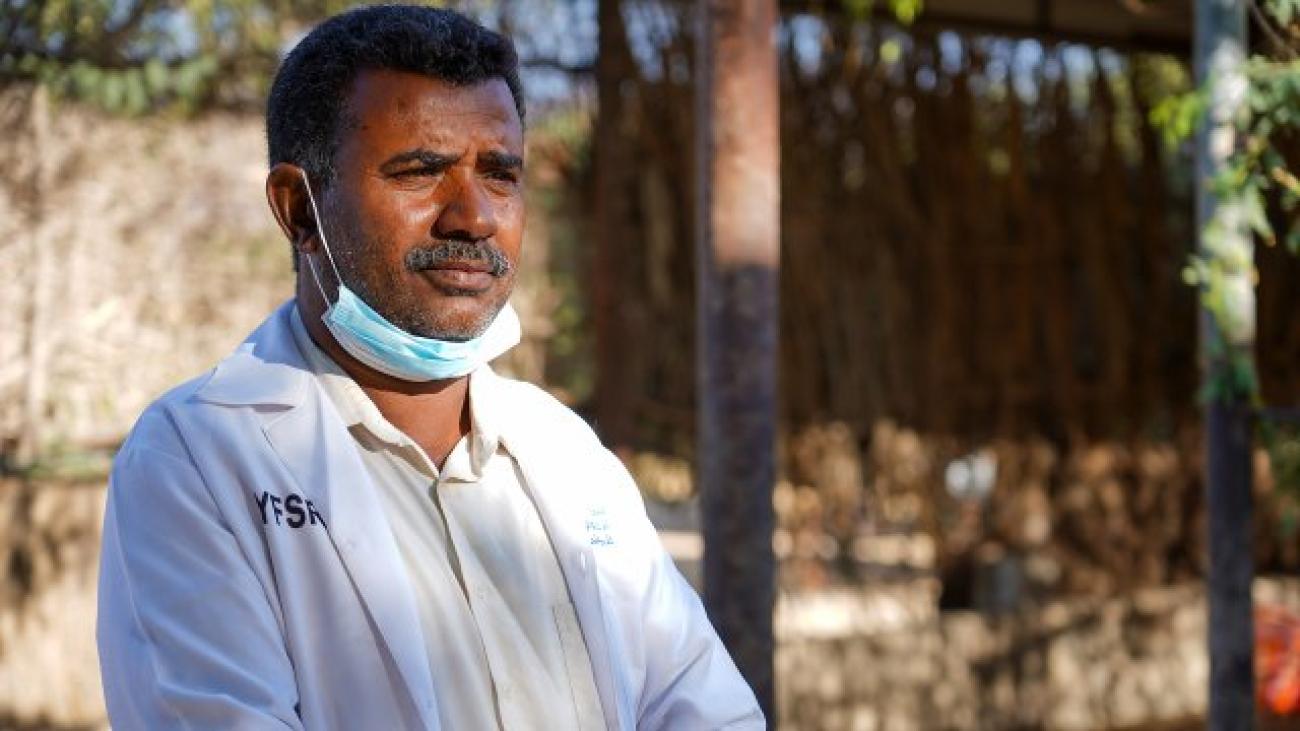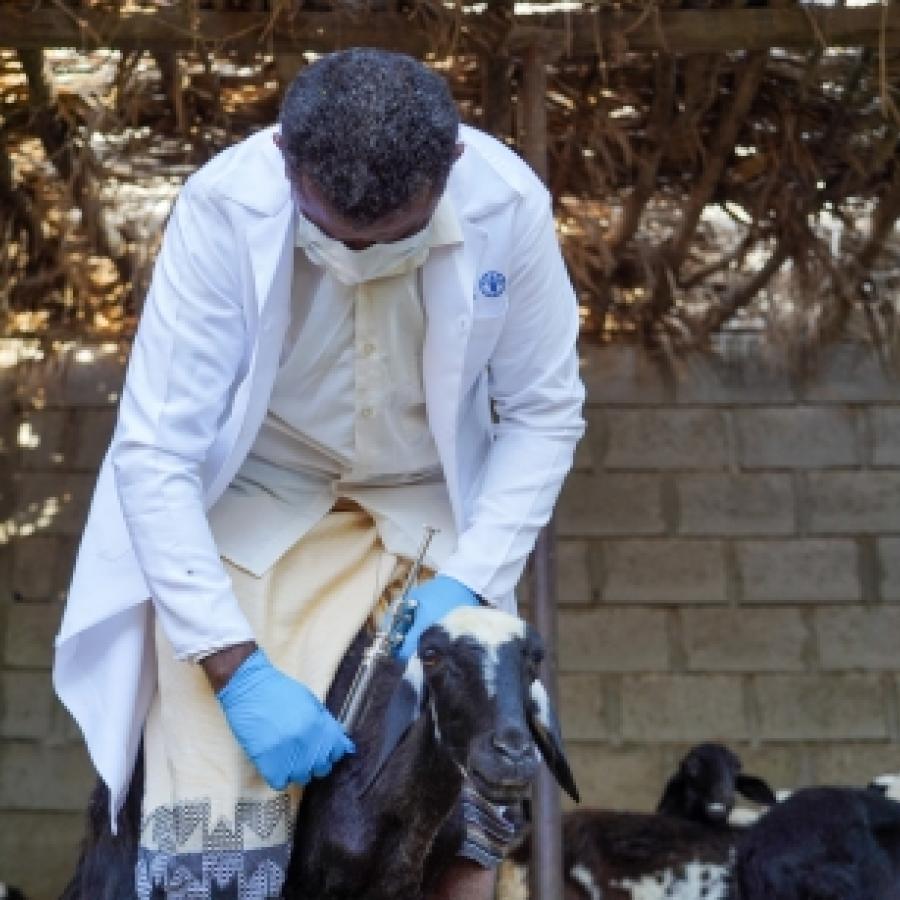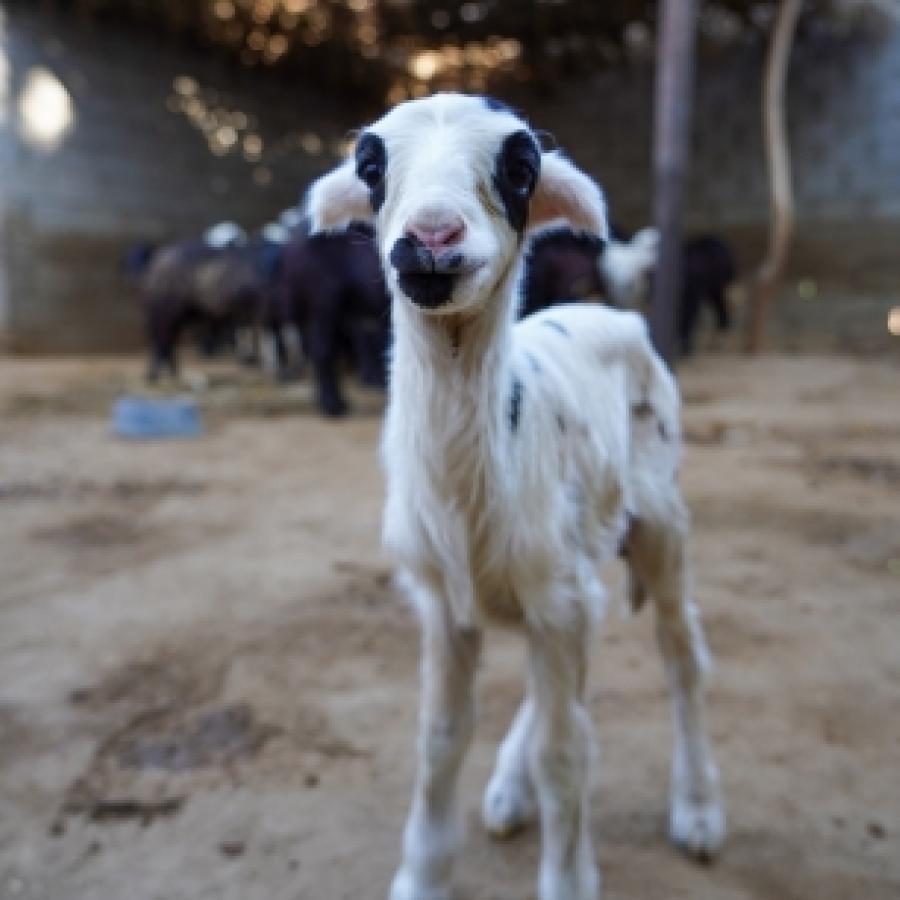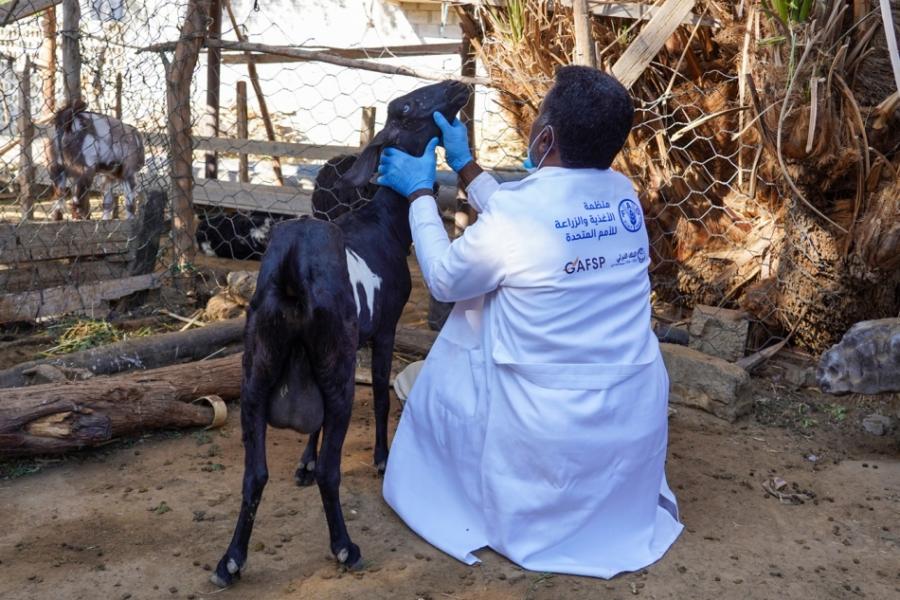FAO Yemen: Fighting Animal Diseases in Yemen

Community animal health workers fill veterinary gaps left by the conflict
“I feel a deep sense of pride when I see the respect and appreciation of my chosen profession reflected in people's eyes,” says 48‑year‑old Tariq Al-Haidari. “I have achieved many successes within the profession, and it fills me with a great sense of accomplishment.”
Tariq is one of 200 community animal health workers who was trained under a project implemented by the Food and Agriculture Organization of the United Nations (FAO) and funded by the World Bank. He now uses his recently acquired knowledge and skills to assist livestock breeders in keeping their animals healthy.
Over 30 days, FAO trained community animal health workers in both theoretical practical matters. The practical training, undertaken through visits to farms in the Shabwah governorate, covered topics such as occupational and personal safety, diagnosis and identification of appropriate treatments, animal husbandry practices, administration of medicine and documentation of cases.
“This training equipped me with the knowledge and skills needed to help farmers keep their livestock healthy,” says Tariq.
“I can identify the most common illnesses and provide basic treatments accordingly. I am also able to raise awareness of the importance of vaccination so that livestock breeders will prevent diseases. I also oversee the process of breeding sheep and goats and refer more complex diseases to the veterinary department of the governorate,” he adds.
An essential safety net
In Yemen, livestock breeding is vital for the food security, livelihoods and incomes of many families in rural and peri-urban areas. Since 2015, the armed conflict has disrupted access to efficient and reliable veterinary services. Disease outbreaks have also become more severe and frequent, increasing the vulnerability of households that depend on livestock for income and food.
Hussein Gadain, the FAO Representative in Yemen, states that the FAO training empowers rural communities to play a significant role in keeping livestock healthy and productive during shocks. He adds that livestock contributes an estimated 20 percent to the agricultural gross domestic product and an estimated 80 percent of farms have livestock.
“Livestock is not only critical as a source of food and nutrition, but also as a valuable asset, serving as a store of wealth that may be used as collateral for credit and is an essential safety net during times of crisis,” says Gadain.
“The training of community animal health workers is fundamental for the livestock sector as it offers an important alternative to deliver animal health services given the near collapse of veterinary services as a result of the conflict in Yemen,” he explains.


Serious business
Community animal health workers like Tariq play a crucial role in strengthening the resilience of vulnerable livestock-dependent households by reducing livestock mortality and boosting productivity. Yet, until recently, many people in the community did not give much thought or value to the importance of animal health.
"I faced numerous challenges, such as the general lack of interest in this profession within society and the stigma associated with individuals working in this field. There are people who poke fun at us saying we are working with animals and not human beings,” he says.
“In the past, the livestock breeders did not take the treating of animals seriously. They thought that animals could not be treated. However, of late, they have realised that treating animals is beneficial, and this increase in people's awareness of these benefits has led many of them to come to me seeking guidance,” adds Tariq.
Tariq says he has become the first port of call for livestock breeders whenever an animal is not well.
“If I am nearby, they will come to me; and if I cannot go to them, they will reach me on my phone,” he explains.
Tariq worked with livestock breeders for close to ten years before he became a community animal health worker, which is why he understands the importance of goats and sheep to the farmers and the pain that comes with the death of an animal.
“It is tragic for someone to raise and invest in an animal for two years and then wake up one morning to find it dead. As such, I always tell livestock breeders that animals can also be affected by diseases and they should be vaccinated, kept healthy and be well fed,” he adds.

Work satisfaction
Tariq finds his work rewarding because he has gained respect and is appreciated by the farmers with whom he works. This is what gives him satisfaction, he says.
“When it comes to income, I do not see my work merely as a means to earn money. I take my work as a noble contribution to others,” he relates.
As front-line staff, community animal health workers provide timely surveillance and report disease situations in remote areas of Yemen. The vaccinations they administered reduced the incidence of diseases and improved livestock production and productivity. In addition, because of this improved access to veterinary services, FAO‑supported livestock owners have reported increased survival rates of their animals.
It is community animal health workers like Tariq who have become central to fighting and managing the recent surge in animal disease outbreaks in Yemen. Their immense contribution to animal health, good husbandry practices and proper animal production has been critical in filling gaps in veterinary services left by the conflict.
Learn more
- Website: FAO country profile: Yemen
- Website: FAO emergencies & resilience: Animal Health



